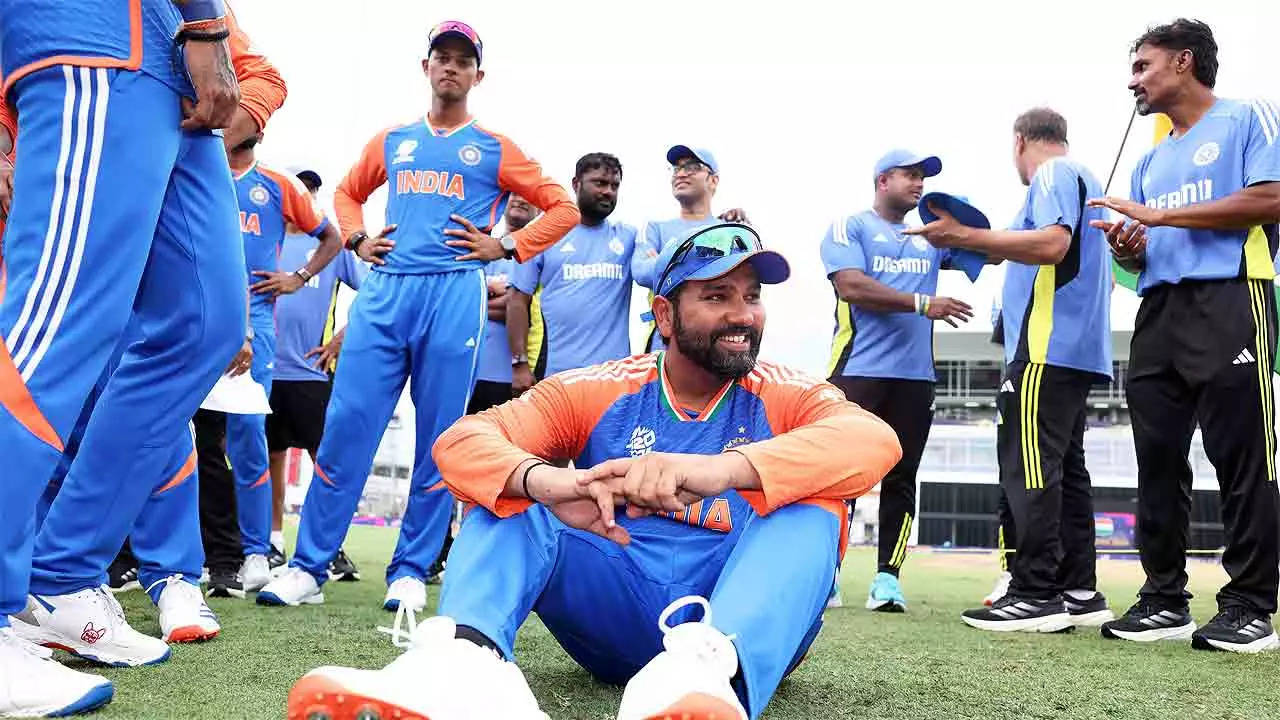Focus has shifted to injury preventive tests & performance tests for contracted playersNEW DELHI: The T20 World Cup winning campaign was a rare instance in the last five years when the Indian team had all its resources fit and available for selection. Plagued by recurring injuries to star players like Jasprit Bumrah and Hardik Pandya post the 2019 ODI World Cup, the Indian cricket board’s (BCCI) medical team at the National Cricket Academy (NCA) changed its approach for contracted players from doing fitness tests to injury preventive tests and performance tests in the last two years.
According to a NCA document, in possession of TOI, it is clearly mentioned that the standard fitness tests are not a ‘selection criterion’ for players. The Indian team management under the captaincy of Virat Kohli and coach Ravi Shastri had made fitness tests like the yo-yo test, which checks the endurance of athletes, a yardstick for players to get into the team.
The NCA team, comprising physios and strength & conditioning coaches, has devised three proformas which are known as National Fitness Testing Criteria (NFTC), Performance Testing Battery and Prevention Testing Battery. The NFTC is supposed to be done every 12-16 weeks, performance testing every six weeks and prevention testing every two weeks.
The NFTC consists of 10 metre sprint test, 20 metre sprint test, standing long jump, yo-yo tests and dexa scan (fat percentage). Interestingly, the document states that these numbers are derived from the average of athletes in an age group and are only group benchmarks. “Please note these are only fitness measures and not a selection criterion,” the document reads.
Notably, the yo-yo and 20 metre sprint numbers are set higher for emerging players than centrally contracted players. The yo-yo mark for contracted players is 16.5 while emerging players are expected to score 16.7.
What’s more interesting is that these yo-yo tests have become a rarity for contracted players at NCA. “The idea is that once a player is centrally contracted, he must have reached the desired level of fitness. With the amount of cricket and time they spend on the road, it is unreasonable for contracted players to undergo NFTC tests. So, the focus has shifted to injury prevention and performance tests. Team India strength and conditioning coach Soham Desai, along with physios Yogesh Parmar, Thulasi and Kamlesh Jain, has done a great job keeping the players in shape through the 2023 ODI World Cup and this T20 World Cup,” a BCCI source told TOI.
The prevention test has become the most important tool. There are tests like overhead squat, walking lunges, glute bridge hold and half kneeling medicine ball throw. These are short tests but it is observed if the player could hold his posture correctly through the tests. If the players struggle to do so, it’s warning sign that the player could be risking an injury.
The GPS vests and whoop bands provide information about running-bowling metrics and players taking responsibility of their off-field activities like sleep and recovery.
According to sources, surgery is the last option. Like in the cases of Bumrah, Hardik, Ravindra Jadeja and Shreyas Iyer, the medical team tried to work around these battery tests in 2022-23, “There are data and tests galore to ensure that the player is in prime shape when he takes the field. The performance testing battery and prevention testing battery played a big role in players going out on the field and performing without worrying about breaking down,” the source said.
Dravid, Rohit devised ‘rotation’ blueprint in February 2022Outgoing Team India head coach Rahul Dravid and captain Rohit Sharma had prepared a blueprint for the pool of players in Feb 2022. “The captain and coach had sat down with the strength and conditioning coach and the physios in February. They had marked the India’s schedule. Rohit and Dravid had given them a pool of players. The support staff was told to ensure those players are available and in the best shape for the T20 World Cup in 2022. The process continued for ODI World Cup in 2023 and now this T20 World Cup. Thus, each series was marked for the players to play in” a source said.
While all the attention was on India’s probable top 15 players, the team management was actually working towards like-for-like options for every player. In effect, the team management had been looking at about 30 players.
“It was decided that if the trainers and physios feel a player is about to hit his threshold, he would be rested straightaway. If any player reveals any discomfort, the team management is willing to rest him at that very point. It’s better to err on the side of caution,” the source added.
Dravid and Rohit have been handicapped due to injuries to Bumrah and Jadeja in 2022 T20 World Cup before losing Rishabh Pant and Pandya in the ODI World Cup last year. But they stuck to their plans of protecting and preparing players for India to finally lift an ICC trophy in Barbados last Saturday.


